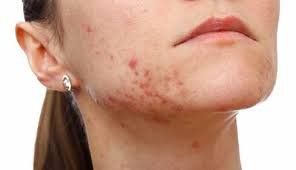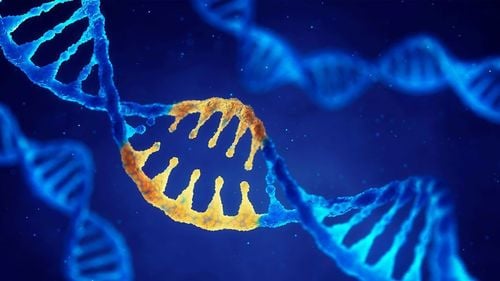This is an automatically translated article.
Muscular dystrophy syndrome constitutes a variety of diseases that cause progressive muscle weakness, eventually leading to muscle atrophy. People with muscular dystrophy often have abnormal genes that prevent the production of proteins needed for healthy muscles. Muscular dystrophy syndrome is divided into several different groups, of which the symptoms of progressive muscular dystrophy most commonly appear in childhood and are common in boys. The remaining groups of muscular dystrophy manifest only in adulthood.
1. What is Muscular Dystrophy Syndrome?
Muscular dystrophy is a group of inherited diseases characterized by progressive weakening of smooth muscle function. Some cases affect the heart and other organ systems. People with muscular dystrophy vary in age from infancy to middle age or the elderly, and the severity of the disease varies depending on when the disease is diagnosed. Some types of muscular dystrophy only affect men. Many people with the disease can lead normal lives if muscular dystrophy progresses slowly. In contrast, patients face severe muscle weakness and often die in their 20s. Thanks to medical developments, children with muscular dystrophy can live longer than in the past. However, currently there is no specific treatment to completely cure muscular dystrophy. Classes of drugs and treatments focus mainly on relieving symptoms and slowing disease progression.
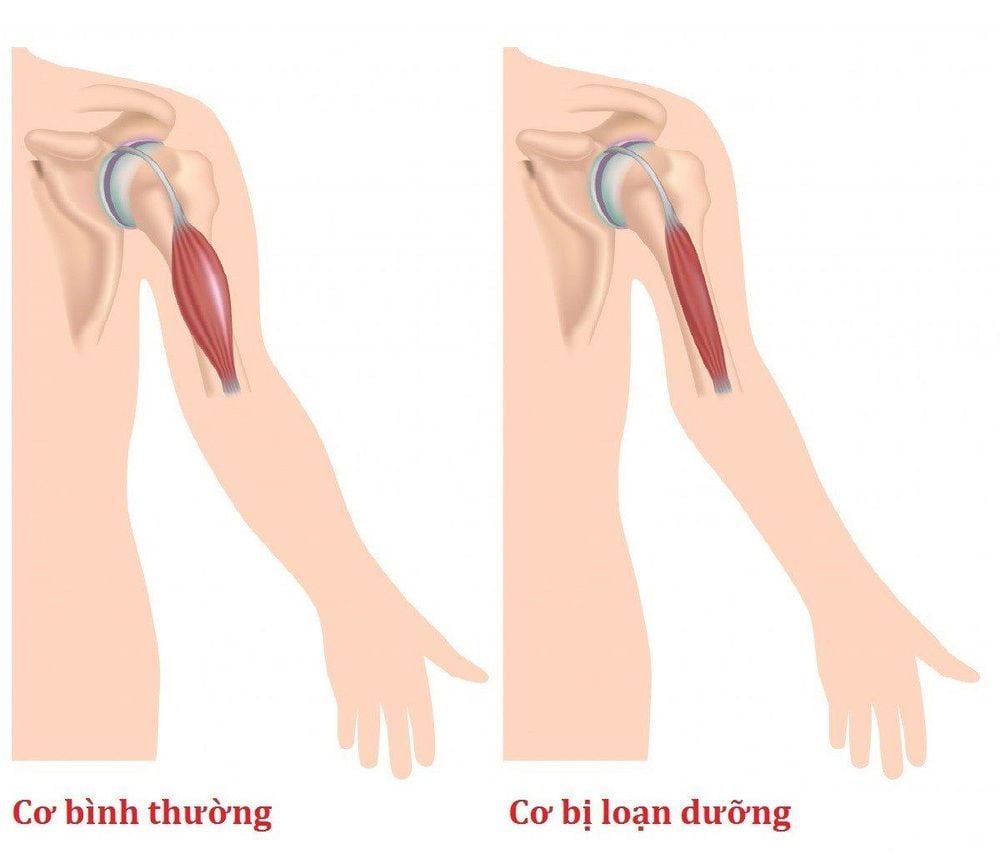
Loạn dưỡng cơ là bệnh di truyền, khiến tình trạng cơ bị teo dần
2. Causes of progressive muscular dystrophy
Muscular dystrophy has been identified to be associated with certain abnormal genes. In 1986, researchers discovered the gene defect that causes Duchenne muscular dystrophy. By 1987, the muscle protein associated with this gene was named dystrophin. Duchenne muscular dystrophy occurs when the regulated gene is unable to produce dystrophin. On the other hand, Becker muscular dystrophy occurs when there is another mutation in the same gene that regulates dystrophin production, but this mutation is usually smaller than the mutation in Duchenne muscular dystrophy. Scientists are still working to uncover the genetic defects that cause many other types of muscular dystrophy.
Most progressive muscular dystrophies belong to the group of diseases inherited on the X chromosome or other genetic diseases that mothers can pass on the disease gene to their sons. A man carries two sex chromosomes, one X chromosome, one Y chromosome, while a woman carries two X sex chromosomes. So for a woman to have the disorder muscle, both X chromosomes must carry the disease gene. However, this case is rare because it requires the mother carrying the gene mutation on one X chromosome to marry the father with muscular dystrophy. A normal mother who carries a mutated gene associated with muscular dystrophy can directly pass the disease on to her son. A small number of people with muscular dystrophy do not pass the disease on to the next generation because the new gene mutation occurs during embryonic development.

Nguyên nhân gây loạn dưỡng cơ tiến triển do mẹ có thể truyền gen bệnh qua cho thai nhi
3. Signs of muscular dystrophy
Progressive muscular dystrophy is divided into several different groups with different signs and symptoms, including:
Myotonic muscular dystrophy (Steinert's disease): this is the most common form of muscular dystrophy in adults, appear in both men and women. The first signs of the disease can appear at any time from childhood to adulthood. In rare cases, the onset of the disease is also in the neonate, so it is called congenital myotonic muscular dystrophy. The name of this disease is related to its specific symptom is hypertonia (English is myotonia), muscle groups become tight and painful after use. This sign is often worse when exposed to cold temperatures. The disease causes muscle weakness and also affects many other organ systems such as the central nervous system, cardiovascular system, gastrointestinal tract, eyes, and some endocrine glands. In most cases, people with Myotonic muscular dystrophy can lead a normal life for many years, but life expectancy is not high. Duchenne muscular dystrophy: This is the most common form of muscular dystrophy in children and affects only boys. Duchenne muscular dystrophy is usually discovered when a child is 2 to 6 years old. Muscle groups atrophy and weaken over time. The rate at which the disease progresses varies from person to person, but many children with Duchenne muscular dystrophy are wheelchair-bound by age 12. In most cases, the arms, legs, and spine gradually become deformed, accompanied by cognitive decline. Breathing difficulties and cardiovascular problems appear in the later stages of the disease. People with Duchenne muscular dystrophy usually die early in their early 20s. Becker muscular dystrophy: This form has many similarities with Duchenne muscular dystrophy but the prognosis is better. Symptoms of Becker muscular dystrophy appear later with a slower progression, with some cases starting at 25 years of age. Similar to Duchenne muscular dystrophy, Becker muscular dystrophy occurs only in men and causes cardiovascular problems. Some people with Becker muscular dystrophy are able to walk in their 30s and live into middle age. Limb-girdle muscular dystrophy: This form of the disease appears during adolescence in both men and women. Limb-girdle muscular dystrophy causes progressive muscle weakness that originates in the claudication and travels up the shoulders, arms, and legs. During the 20s, walking becomes difficult, even the patient cannot move on his own.
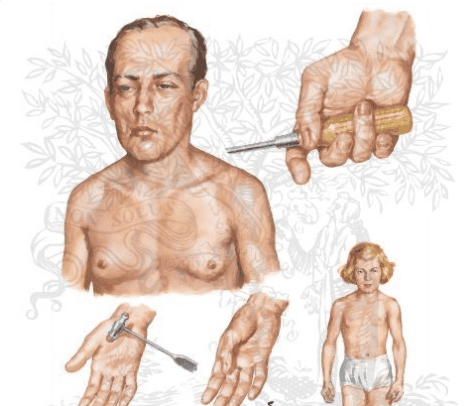
Loạn dưỡng cơ Myotonic có thể xuất hiện ở mọi lứa tuổi
Facioscapulohumeral muscular dystrophy: affects the musculoskeletal group of the face, upper arm, and shoulder area. This form of muscular dystrophy begins in adolescence and occurs in both men and women. The disease progresses slowly, divided into small stages with rapid deterioration and weakness. The disease progresses from mild to complete loss of function. Walking, chewing, swallowing and speaking are all difficult. About 50% of people with Facioscapulohumeral muscular dystrophy maintain the ability to walk with a normal life expectancy. Congenital muscular dystrophy: present from birth. Congenital muscular dystrophy progresses slowly and affects both sexes. Congenital muscular dystrophy is divided into Fukuyama muscular dystrophy and myosin deficiency congenital muscular dystrophy. Both disease groups cause muscle weakness from birth or during the first months of age with early and severe spasticity. Fukuyama Congenital Muscular Dystrophy can cause brain abnormalities and manifest in seizures. Oculopharyngeal muscular dystrophy: This form of muscular dystrophy involves the eyes and throat area. The disease usually appears in both sexes during middle age, from 40 to 60 years old. Common symptoms include weakness of the eye muscles, facial muscles leading to difficulty swallowing. Weakness of the shoulder and pelvic muscles may occur in the late stages of the disease. Hiccups and recurrent pneumonia may also occur. Peripheral muscular dystrophy: this is a rare group of muscular dystrophies, appearing in both men and women. The disease causes atrophy and weakness of peripheral muscle groups such as hands and feet. Peripheral muscular dystrophy is generally less severe, progresses slowly, and affects fewer muscle groups than other forms of muscular dystrophy. Emery-Dreifuss Muscular Dystrophy: This is a rare early-onset muscular dystrophy that affects mainly boys. It is very rare for girls to get this condition because a gene mutation on both X chromosomes is required. Muscle weakness and atrophy involve the shoulders, arms, and legs. Life-threatening cardiovascular problems are common and can also affect healthy people who carry the disease gene. Muscle cramps appear at an early stage. The disease progresses slowly and causes less severe muscle weakness than other forms of muscular dystrophy.
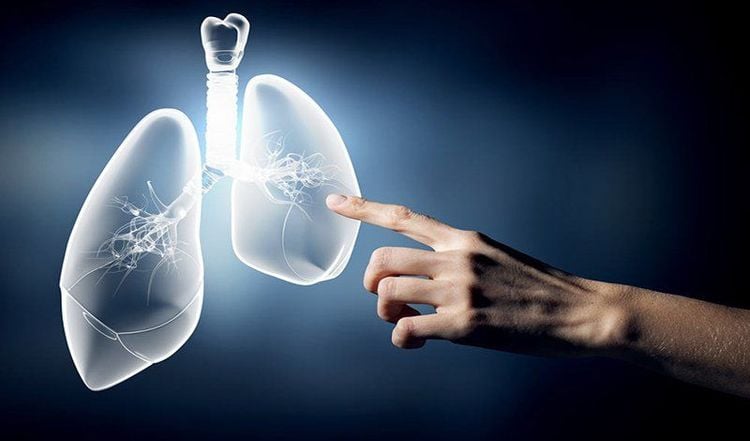
Viêm phổi là một dấu hiệu của bệnh loạn dưỡng cơ oculopharyngeal
Muscular dystrophy causes many different complications that vary from disease to disease group. Some types of muscular dystrophy have a good prognosis while others progress more rapidly and severely. Progressive muscular dystrophy leads to loss of the ability to walk, breathe, swallow, and speak.
Complications of muscular dystrophy include:
Respiratory obstruction: progressive muscle weakness involving the respiratory muscles, especially the diaphragm, which makes the patient more difficult and increases the risk of pneumonia. Spinal deformity: due to weakness of the supporting muscles of the spine, common in Duchenne muscular dystrophy. Cardiovascular problems: Heart arrhythmias are common and can be life-threatening. Difficulty swallowing: Muscular dystrophy causes weakness of the esophageal muscles, causing difficulties in eating and drinking. Tendon contracture: some cases require surgery to treat. Abnormalities related to vision: due to cataract.
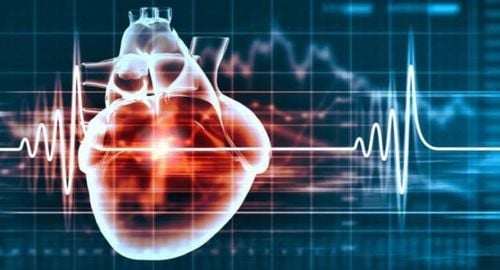
Bệnh loạn dưỡng cơ có thể gây ra biến chứng rối loạn nhịp tim
4. Diagnosis of muscular dystrophy
The doctor will perform a clinical examination and exploit information related to the patient's and family's history. Muscular dystrophy is diagnosed based on a variety of tests, including:
Muscle biopsy: a small muscle sample will be taken from the patient to observe histopathological features, helping to rule out other diagnoses. other diseases. Gene testing: blood samples are taken for genomic analysis to detect abnormal genes in blood relatives. Neurological tests: Many tests are ordered to evaluate nerve function, reflexes, and coordination. The most common is the electromyography test. Enzyme quantification: the patient is asked to draw blood to check for proteins and enzymes associated with muscle weakness. People with muscular dystrophy have higher creatinine kinase levels due to more muscle breakdown. Cardiovascular function tests: An electrocardiogram may be performed to detect arrhythmias. Some types of muscular dystrophy can cause arrhythmias and other types of damage. Magnetic resonance imaging or ultrasound: imaging tools help doctors assess the amount of muscle and detect adipose tissue invasion and replacement of muscle tissue in the body.
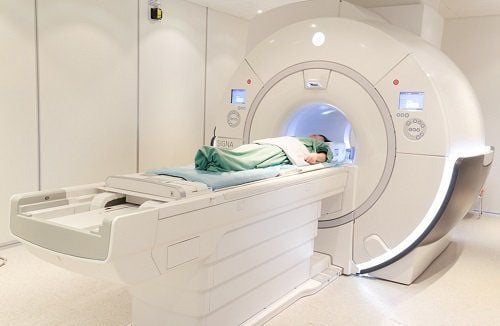
Chụp cộng hưởng từ cho phép chẩn đoán hình ảnh loạn dưỡng cơ
Muscular dystrophy can leave many dangerous complications affecting many hearts and other organs. Therefore, when you have symptoms of the disease, you should go to medical centers for examination and treatment.
Vinmec International General Hospital is the address for examination, treatment and prevention of diseases. When performing the examination process at Vinmec, customers will be welcomed and used modern facilities and equipment along with perfect medical services under the guidance and advice of experts. Good doctors, well-trained both at home and abroad.
Please dial HOTLINE for more information or register for an appointment HERE. Download MyVinmec app to make appointments faster and to manage your bookings easily.
Reference source: webmd.com





